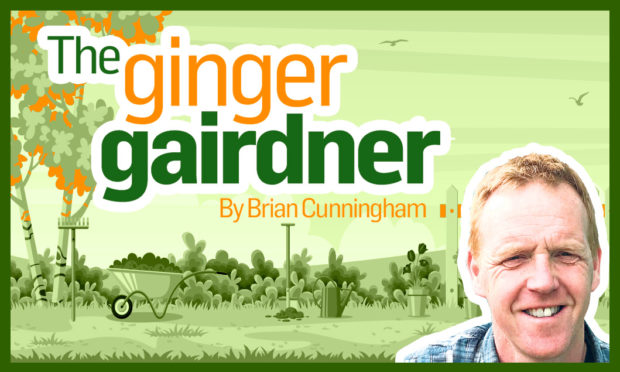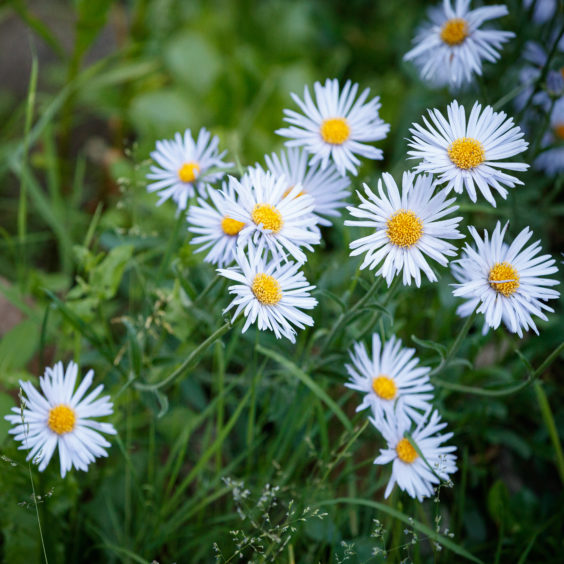What’s your lawn to you? An immaculate showpiece, a children’s playground, or a place for wildflowers in spring? Brian Cunningham looks at new possibilities.
For some of us the garden lawn is the centrepiece to the immaculately maintained and colourful flower beds that surround it, a lush and well-manicured carpet of green velvet, complete with bowling green stripes.
For others the lawn is for washing lines, a space for the children to run around on, being magically transformed into Tannadice or Dens parks to play out the latest Dundee derby match with friends.
In some gardens a lawn is simply all there is, kept trimmed and tidy. And then there are the lawns that for those interested in reading this column prefer just to put to the backs of our minds, pretending that we have not seen them.
Having a young family, the lawn in my own garden falls into the middle camp though if I’m being honest, as much as I drool over the look of a pristine lawn, I don’t think I’ll ever go in for such luxury. For a start I don’t have the time.
Life just seems awfy busy these days (well up until lately it was!). Both my wife and I keep full-time jobs and although there may be officially only two youngsters in our family, she wonderfully also takes care of three children in our house.
With school work and various clubs we have definitely reached the ’24 hour taxi service of mum and dad’ stage in life that we have so often been warned about. Like so many of us in this same situation, there just doesn’t seem to be enough hours in the day.
That’s why I went looking for a different way to manage the lawns in our garden.
I noticed during the spells when I’d left it more like two-week intervals between cutting my grass than the usual one week, how attractive the white clover in my lawn would look when in flower and how amazing it was to see the many bees absorbing this abundance of pollen.
I wanted to take advantage of this so I decided to stop cutting the grass in our front garden to encourage this wildlife- friendly floral effect.
What are seen as weeds to others soon began to relish this freedom and flowered away happily like cultivated plants for the first time in years; buttercups, plantains, speedwells, yarrow and self heal now brought shades of yellow, blue and white to what was usually a bland and boring lawn.
However, access through the now long grass to tidy the beds in front of my house usually ended up with sodden feet thanks to our now soggy summers and as the season wore on, the whole area just became a shaggy mess and started to resemble those lawns I tended to turn my eyes away from.
By running the mower once a fortnight around the edge of the lawn and keeping the edges trimmed, not only have I avoided the need to put on a pair of wellies when I need to maintain the beds, it also acts like a frame to this meadow-like lawn, making it look deliberate and not just abandoned.
I also cut paths of spirals and labyrinths through the longer grass which my kids would run through when they were younger but now add to the design effect of the whole garden.
The beauty of this is that you can imagine up a whole new look every year.
I know this won’t be for everybody and for others may be more suited to parts of the garden further away from the house.
There is a compromise where surveys have suggested that by raising the height of your mowing cut and reducing the frequency you cut your grass down to three weeks can more than double the amount of wildflowers you could see in your lawn whilst achieving a more tidy appearance.
Compared to the regime of weeding, feeding, scarifying, aerating, top dressing and the three times a week grass cutting required to keep a bowling green type lawn, this is definitely the low maintenance lawn I need right now, freeing up more quality time with my family.
The main effort is required with a cut towards the end of summer, again with the mower at the highest setting, although you may find a strimmer or a traditional scythe is needed to get through the long grass.
It’s best to leave the mowings untouched for a few days to allow any wildflower seed to drop to the ground in the hope that they will germinate and increase your display next season.
It is important that these mowings are lifted and not just forgotten about to avoid increasing soil fertility and the vigour of the quicker growing grasses.
If I haven’t fully convinced you, ‘No-mow’ is one of those methods of gardening that you could give a try but if you didn’t like it you could easily return your lawn back to the way you had it before, without causing any long term damage.
I think the biggest pull of this for me is that, with less use of my powered mower, weed killers and fertilisers, and the fossil fuels needed to operate and produce them, it allows me to reduce any negative impact my style of gardening has on the environment.
For me, that’s how gardening should be.
Brian Cunningham is a presenter on the BBC’s Beechgrove Garden, and the head gardener at Scone Palace.
Follow him on Twitter @gingergairdner












